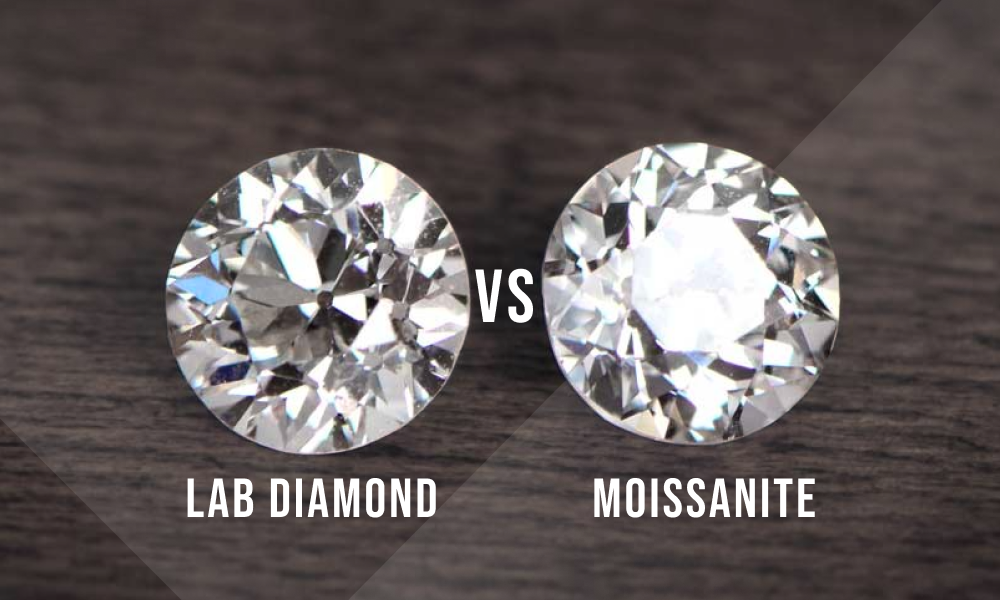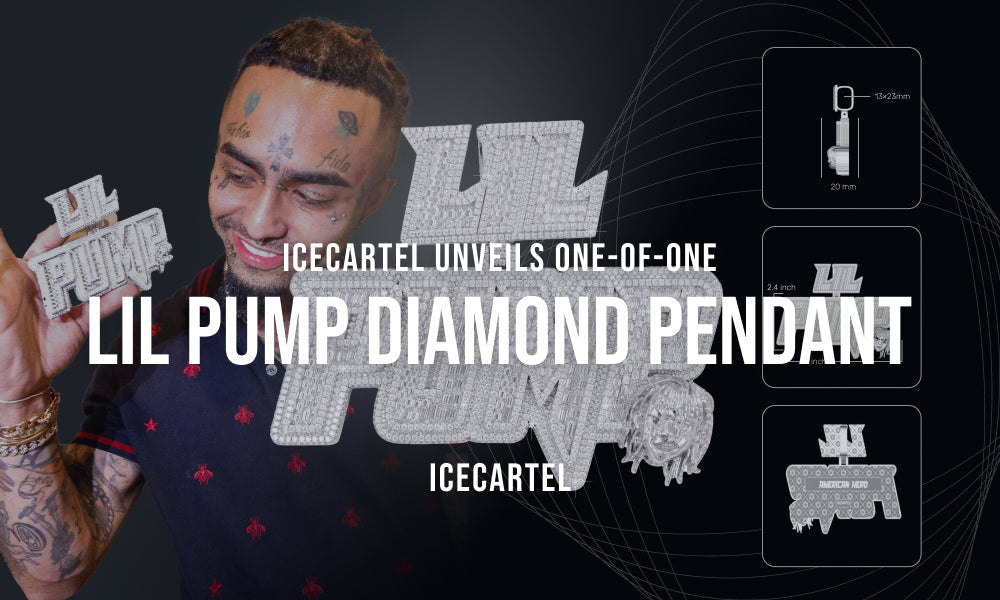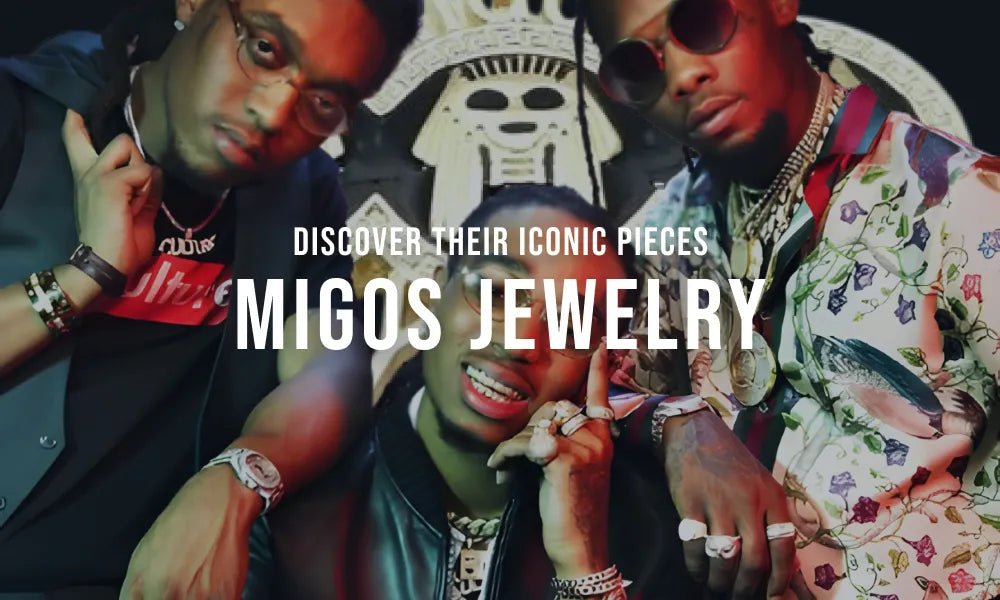Moissanite is a modern diamond alternative increasing in popularity due to its brilliance, durability, and affordability. This blog post will cover the process of creating synthetic moissanite and the science behind it, opening up a brilliant world of modern luxury and possibilities for the future of jewelry making and jewelry design.
What is Moissanite, and What is Moissanite Made Of?
Moissanite Origins - Natural & Man-Made
Have you ever wondered where does moissanite come from? Nobel Prize-winning chemist Dr. Henri Moissan discovered natural moissanite in 1893, hence the name moissanite. Natural moissanite is very rare, typically found in kimberlites, lamproites, and meteorites, and only in extremely small quantities.
Since natural moissanite is so rare and expensive, scientists discovered a way to recreate its stunning beauty in a lab. Production started in the 1990s with Charles & Colvard, a
gemstone manufacturer/jewelry company that is the original creator of lab-grown moissanite.
Pros of Moissanite
Budget-Friendly: Moissanite is a budget-friendly diamond alternative with a similar appearance. It costs less per carat with the same quality as graded using the 4Cs.
Durability: Minerals are rated on the Mohs scale of hardness. The Mohs scale of hardness is a convenient way to test and rate the hardness of minerals or “scratch-resistant” tendencies, using a ranking scale of 1-10. Moissanite rates 9.25, making it an extremely scratch-resistant mineral–diamond is famous for its hardness, rating 10/10.
Fire & Brilliance: Moissanite has a high refractive index of 2.65 to 2.69 with noticeable double refractivity and an adamantine luster. This makes the stone dense and incredibly brilliant–did you know that moissanite is the most brilliant stone in the world? Moissanite showcases a show-stopping “disco-ball” or rainbow effect with a noticeable doubling on the facet junctions when viewed under 10x magnification.
Eco-friendly: Moissanite is a lab-created gemstone, making it a sustainable and ethical selection instead of diamonds, gemstones, and other natural stones. Lab-created stones do not go through the mining process or harsh work conditions because they are synthesized in a lab. Choosing an eco-friendly, sustainable, and socially conscious alternative to a diamond will not compromise quality or beauty.
Cons of Moissanite
Appearance: At first glance, moissanite may look similar to a diamond. However, with its incredible fire and stunning rainbow flashes of bright rainbow color, this may seem overwhelming to others, making it remarkably different from a diamond.
Not Rare: Since moissanite is created in a lab, it is not a rare or precious stone. It is plentiful in quantity and quality, allowing it to be readily available at different price points. This makes moissanite less sought-after or prized.
Stigma: There may be a stigma attached to man-made stones, often with the belief they are cheap and poorly made. Moissanite is a high-quality diamond alternative with many positive attributes that await discovery for those interested in obtaining knowledge about the history and background of moissanite.
Lower Resale Value: Moissanite can be authenticated by a gemological lab for insurance purposes or by a jewelry professional who offers moissanite certifications. However, moissanite will have a lower resale value than diamonds, precious gemstones, and fine jewelry due to its origins.
How is Moissanite Made?
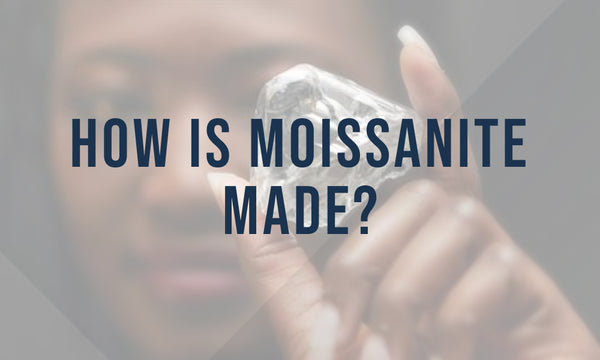
Moissanite is composed of silicon carbide (SiC), with a carbon atom surrounded by four silicon atoms in a tetrahedral form. Synthetic moissanite is formed under controlled conditions using a combination of pressure and heat. It can take 2-3 months to produce a gem through a long, arduous process.
Moissanite is laboratory created using the following steps:
Identification of the Raw Material
The Lely process or Lely method is used to create large silicon carbide crystals. Production of silicon carbide crystals features a combination of high-purity silicon with carbon and heating the mixture in an inert atmosphere.
Creation of the Moissanite Crystal
The process replicates nature. Silicon carbide powder is heated until it becomes gas under controlled conditions creating the right balance of elements and allowing the moissanite to grow over several months. It may take up to 2 months for the crystal to form.
Finishing and Setting of the Moissanite
Moissanite crystals are cut and faceted into different shapes and sizes (caratage) ready for setting. Moissanite is set into fine metals, including gold and platinum. Moissanite can be set into prong, bezel, pave, and channel–all the settings that diamonds and other gemstones are commonly placed into, making it versatile and perfect for your next special purchase.
Why is Moissanite Unique
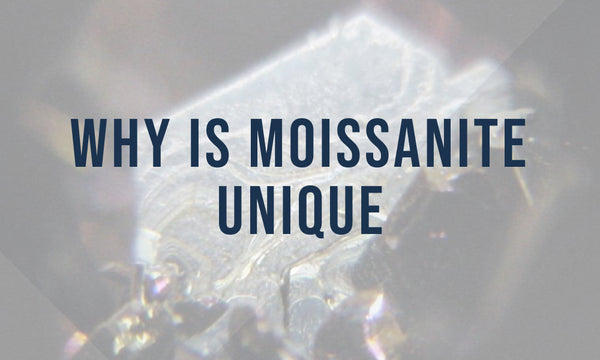
Brilliance & Durability: As mentioned above, moissanite is a very brilliant gemstone with a high refractive index. This makes the stone appeal to those who love incredible fire and sparkle. It is also very durable, rating a 9.25 on the Mohs hardness scale making it suitable for an engagement ring.
Affordability & Price Options: Compared to diamonds, moissanite is a more affordable option for those seeking a high-quality diamond alternative. Moissanite displays all the fire and sparkle of a diamond at a fraction of the cost. Get the size, cut, and carat you have always dreamed up without the markup.
Eco-Friendly: Moissanite is an eco-friendly solution instead of an investing natural diamond because of its origin. Moissanite is created in a lab, making it a socially conscious choice--moissanite is not part of the strenuous work chain involved with mining and sourcing gemstones and diamonds. Moissanite is durable and lasts a lifetime, making it a sustainable stone for any fine jewelry design.
How to Care for Moissanite

It is very easy to keep your moissanite clean. Using warm soapy water is an easy-at-home method:
- Add warm tap water with a few drops of dish detergent and mix.
- Gently scrubbing your moissanite ring and other moissanite jewelry with a new, unused toothbrush or soft bristle brush wipes away bacteria and debris. Paying close attention to the prongs and underneath the stone is optimal for revealing its sparkle over and over.
- Running cool water from the tap, washing away the debris, and soap.
- Pat or air dry.
Tips for Storage & Safety:
- Store your moissanite jewelry in a drawer, box, or jewelry sachet that keeps it safe from damage, dust, and getting misplaced.
- Keeping moissanite jewelry away from harsh chemicals (chlorine, cleaning products), oils, makeup, lotion, and washes helps keep it clean and safe from possible damage.
Frequently Asked Questions
Is moissanite a sustainable and eco-friendly choice for jewelry?
Moissanite is a great choice for those who seek a durable, high-quality stone for an engagement ring and other jewelry. It is sustainable for a lifetime of wear and created in a lab setting, making it eco-friendly without the environmental impact accompanying mined stones and diamonds.
How do the brilliance and fire of moissanite compare to diamonds?
Both are brilliant with their unique display of fire. However, moissanite is more brilliant than a diamond with a higher refractive index, dispersing a show-stopping disco-ball rainbow effect and double refractivity.
Is moissanite as hard as diamonds and other popular gemstones?
Diamonds rate a 10 on the Mohs hardness scale, with moissanite being almost as hard as a diamond with a 9.25 rating. Moissanite is durable, high-quality, and hard enough to be worn daily. It is also harder than most common gemstones, such as quartz and beryl varieties.
Can moissanite be used instead of diamonds in engagement rings and other jewelry?
Since moissanite is considerably less expensive than diamonds of the same caratage, the consumer can get a larger stone for the same price as a smaller diamond. Moissanite is a great socially conscious choice instead of diamond, exhibiting all the beauty, fire, brilliance, and luxury at a fraction of the cost.
Conclusion
Moissanite is the lab-created version of natural moissanite, offering a lower-cost alternative for this uniquely stunning gemstone.
Lab moissanite is formed using the Lely process/ Lely method, creating large silicon carbide crystals. Production of silicon carbide crystals, using a combination of high-purity silicon with carbon and heating the mixture at high temperatures in an inert atmosphere.
Moissanite crystals take many months to form through this process. Moissanite is then cut and faceted, making the gem ready for setting and jewelry design.
Moissanite is a high-quality, sustainable alternative to diamonds and diamond jewelry. It exhibits even more fire than a diamond with its higher refractive index, making it the most brilliant stone on earth.
Moissanite is easy to clean using the soapy water method at home. Removing your moissanite before swimming or cleaning with household products prevents a cloudy build-up that may cause your stone to lose sparkle.
REFERENCES
Charles & Colvard Patents
https://www.charlesandcolvard.com/patents
Charles & Colvard Wikipedia
https://en.wikipedia.org/wiki/Charles_%26_Colvard
Wikipedia
https://en.wikipedia.org/wiki/Lely_method
Gema & Co.
https://gemaandco.com/blogs/blog/how-are-moissanites-made
Moh’s Hardness Scale
https://geology.com/minerals/mohs-hardness-scale.shtml#definition























